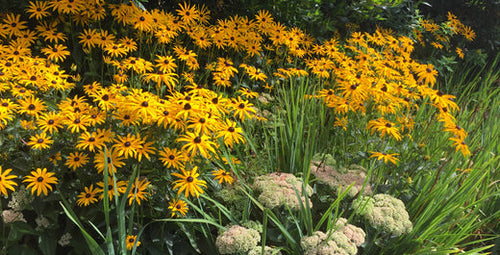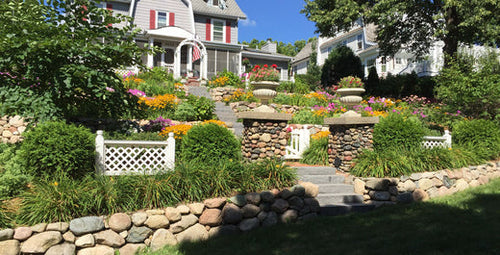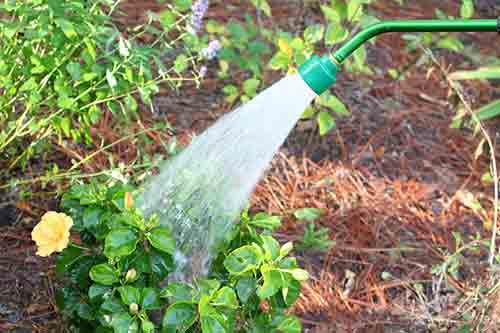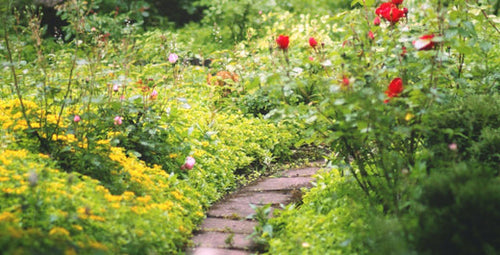If you want to make a bold statement in your garden, you can’t go wrong with red-flowering plants.
These brilliant bloomers are not shy about showing off and will quickly transform any space into a tropical wonderland. Shades vary from pale blush to eye-popping crimson that will allow you to create a vibrant, all-red garden using just one palette. Keep in mind though, that the brighter the shade of red you plant, the less of it you probably want to use.  Big blocks of crimson or scarlet flowering plants need to be teamed with lighter shades to keep them from overpowering your entire garden or containers. One of the best ways to effectively use red bloomers in the landscape is to plant them in containers scattered around your garden as bold accents instead of one big, fiery show.
Big blocks of crimson or scarlet flowering plants need to be teamed with lighter shades to keep them from overpowering your entire garden or containers. One of the best ways to effectively use red bloomers in the landscape is to plant them in containers scattered around your garden as bold accents instead of one big, fiery show.
Most red-flowering perennials and annuals are sun-lovers requiring at least 6 to 8 hours of direct sun a day. They also look terrific when they have yellow, white, or blue-flowering neighbors. Some folks feel that pink and/or salmon blooms don’t look good paired with red blooms, but there are no rules when it comes to gardening so mix away.
Some favorite red flowering annuals include:
- Geranium
- Zinnia
- Salvia
- Canna
- Celosia
- Dahlia
- Tropical Hibiscus
- Sunpatiens
- Lantana
- Petunia
- Pentas
- Mandevilla
- Verbena
- Begonia
Top perennial picks with red blooms include:
- Bee balm
- Hardy hibiscus
- Clematis
- Asiatic lily
- Coneflower
- Penstemon
- Daylily,
- Dianthus
- Yarrow
- Helenium
- Gaillardia
- Geum
- Butterfly weed
- Chrysanthemum
- Phlox
- Salvia
- Bleeding heart
Written by Justin Hancock

















